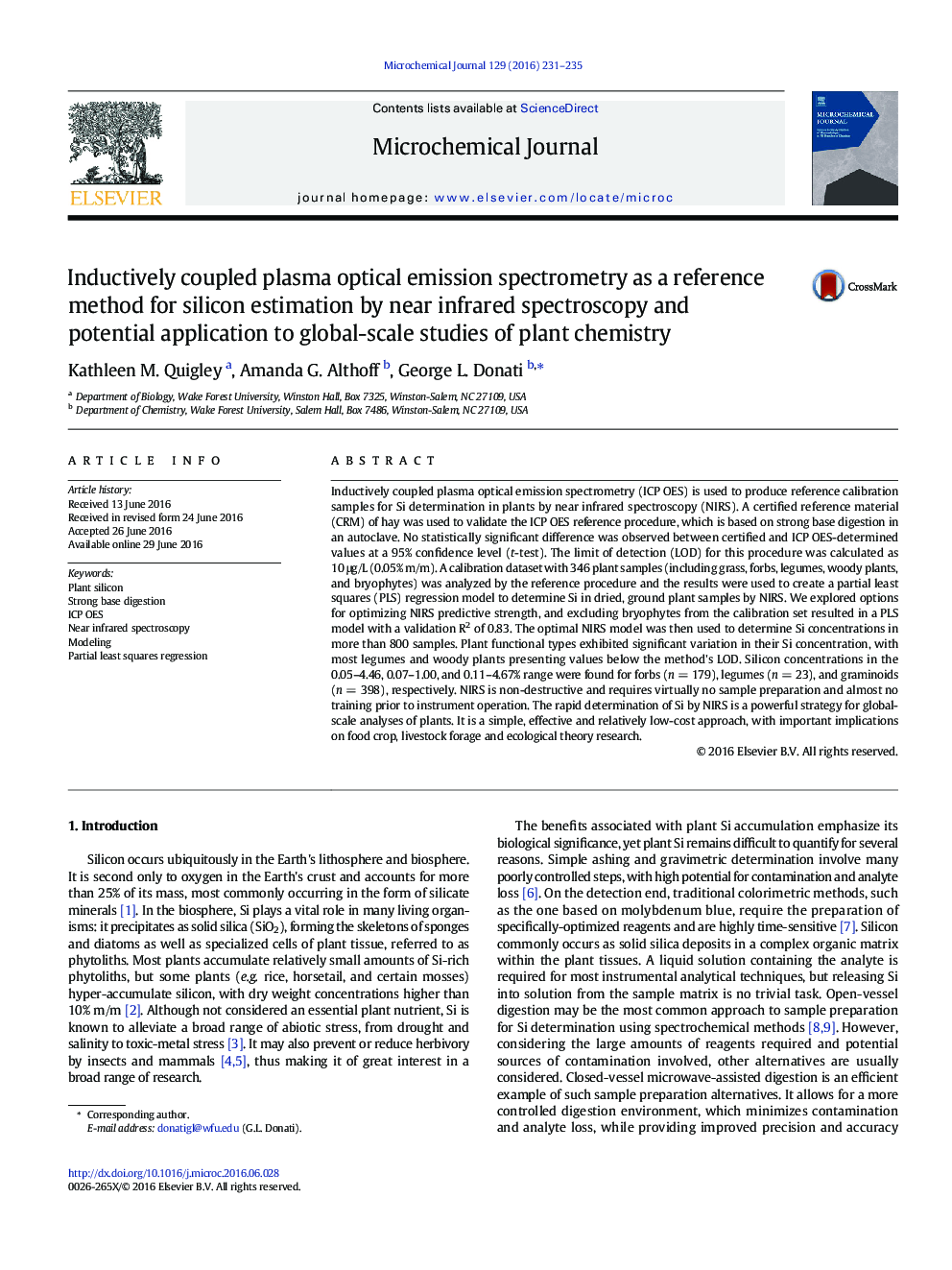| کد مقاله | کد نشریه | سال انتشار | مقاله انگلیسی | نسخه تمام متن |
|---|---|---|---|---|
| 1227612 | 1494865 | 2016 | 5 صفحه PDF | دانلود رایگان |
• ICP OES is used to produce calibration samples for near infrared spectroscopy (NIRS).
• A calibration dataset with 346 plant samples is used to create a PLS regression model.
• The PLS model is used to determine Si in dried, ground plant samples by NIRS.
• More than 800 samples are analyzed, with Si concentrations in the 0.05–4.67% range.
• With no sample preparation required, the NIRS method is fast, effective and inexpensive.
Inductively coupled plasma optical emission spectrometry (ICP OES) is used to produce reference calibration samples for Si determination in plants by near infrared spectroscopy (NIRS). A certified reference material (CRM) of hay was used to validate the ICP OES reference procedure, which is based on strong base digestion in an autoclave. No statistically significant difference was observed between certified and ICP OES-determined values at a 95% confidence level (t-test). The limit of detection (LOD) for this procedure was calculated as 10 μg/L (0.05% m/m). A calibration dataset with 346 plant samples (including grass, forbs, legumes, woody plants, and bryophytes) was analyzed by the reference procedure and the results were used to create a partial least squares (PLS) regression model to determine Si in dried, ground plant samples by NIRS. We explored options for optimizing NIRS predictive strength, and excluding bryophytes from the calibration set resulted in a PLS model with a validation R2 of 0.83. The optimal NIRS model was then used to determine Si concentrations in more than 800 samples. Plant functional types exhibited significant variation in their Si concentration, with most legumes and woody plants presenting values below the method's LOD. Silicon concentrations in the 0.05–4.46, 0.07–1.00, and 0.11–4.67% range were found for forbs (n = 179), legumes (n = 23), and graminoids (n = 398), respectively. NIRS is non-destructive and requires virtually no sample preparation and almost no training prior to instrument operation. The rapid determination of Si by NIRS is a powerful strategy for global-scale analyses of plants. It is a simple, effective and relatively low-cost approach, with important implications on food crop, livestock forage and ecological theory research.
Journal: Microchemical Journal - Volume 129, November 2016, Pages 231–235
